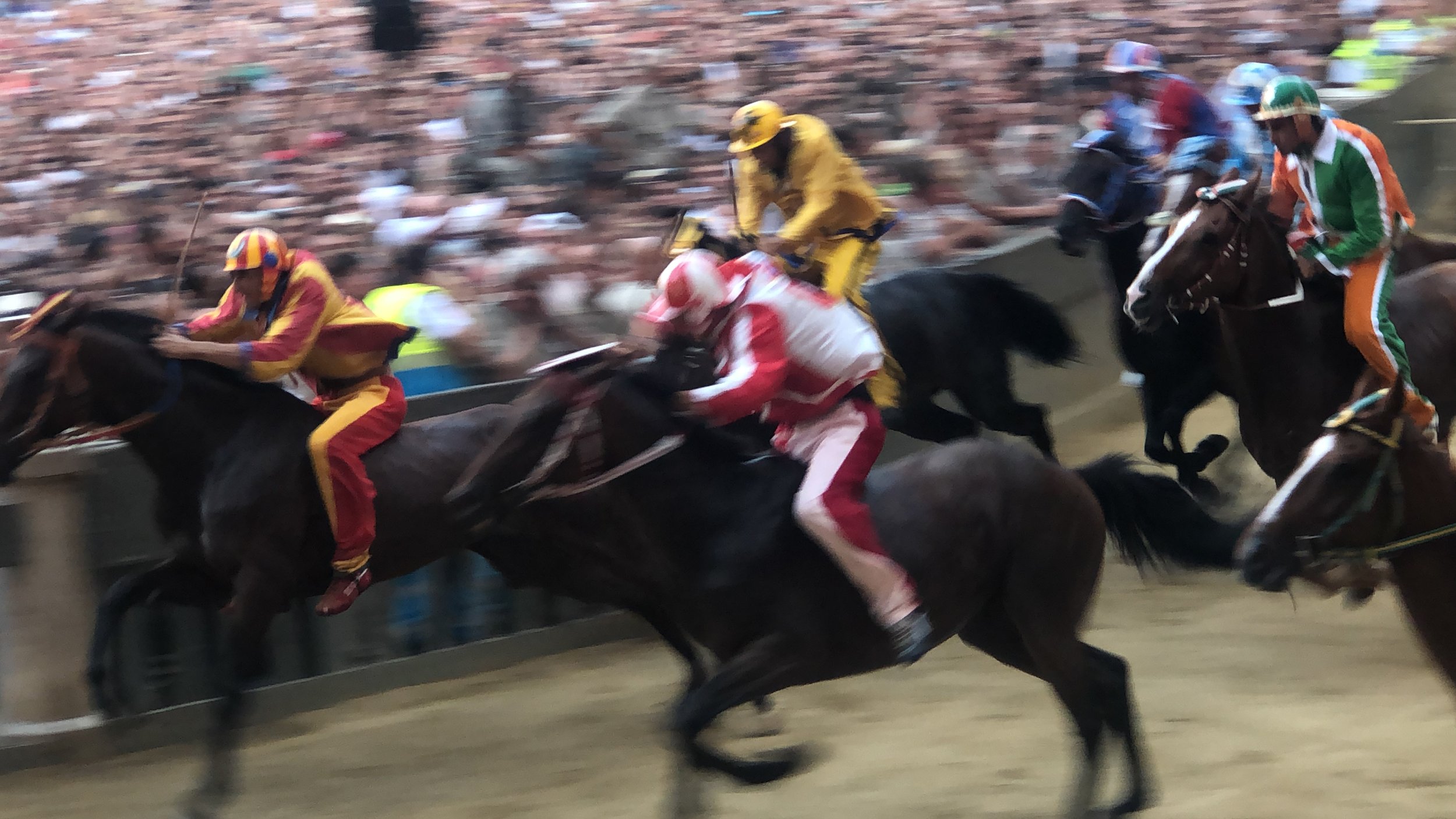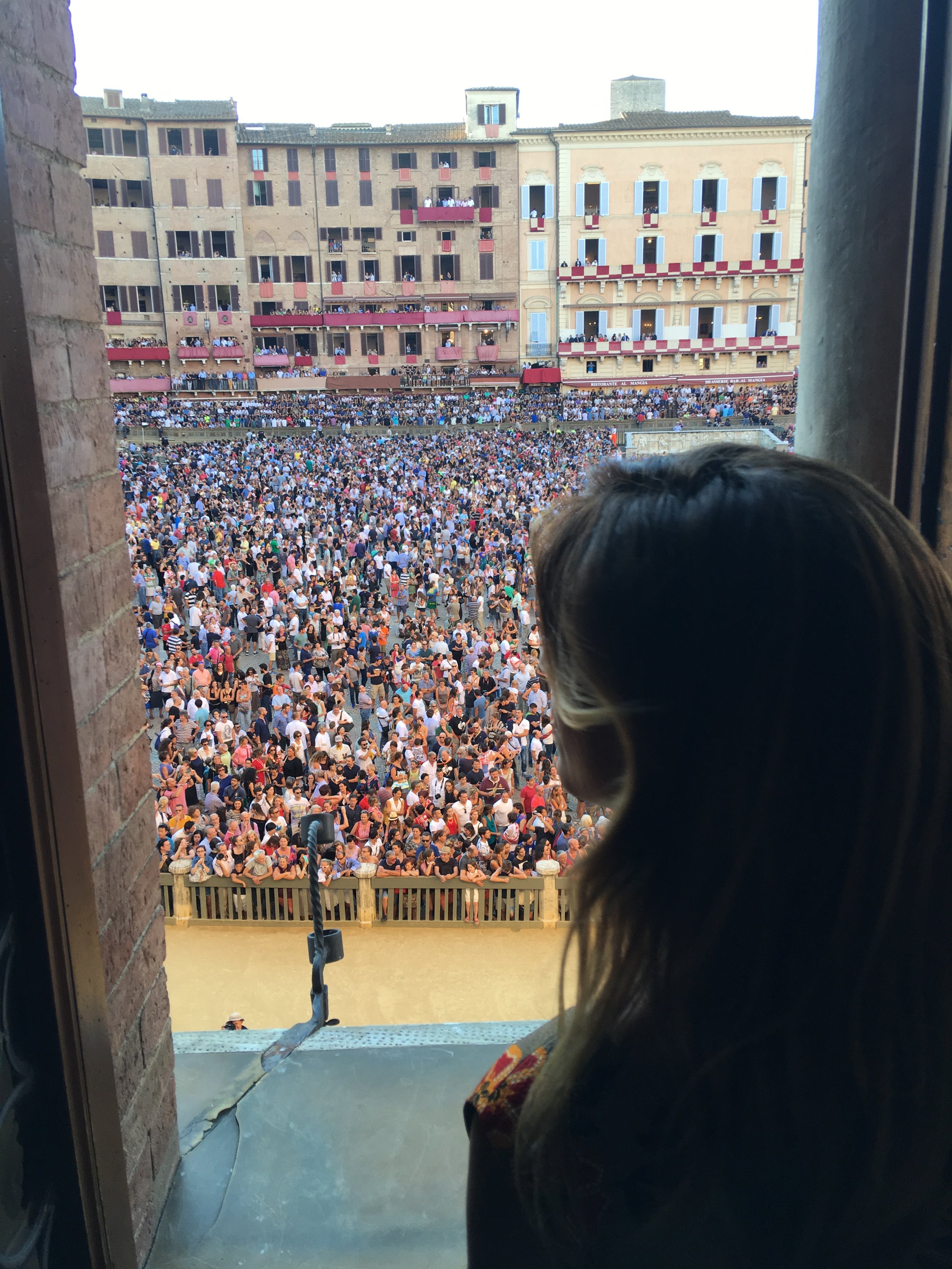The Palio di Siena: An Architectural Ode to Ritual and Rivalry
The Palio di Siena: An Architectural Ode to Ritual and Rivalry
I’ve experienced the Palio di Siena three times—in the sweltering August of 2016, the amber light of October 2018, and the thick summer air of July 2019—and each visit feels like stepping into an endless sogno rinascimentale (Renaissance dream). It’s a strange sensation, to find yourself swept into the crossfire of history, rivalry, and a bareback horse race that’s over in the time it takes to say, è finito! And yes, blink I did—only to be elbowed by an nonna (grandmother) who, in Siena, probably has more strategy in her pinkie than most generals.
The Palio is, officially, a race, but calling it that feels a bit like calling Michelangelo’s David a “decent sculpture.” What unfolds in the Piazza del Campo is less a race and more a crescendo of spectacle, strategy, and pride—all carefully curated by a city that hasn’t changed its mind about anything for cinquecento anni (500 years). Each contrada, or neighborhood, emerges in its colors, flags fluttering with the confidence of something that has been done many times before and will be done ancora e ancora (again and again).
And the costumes—mamma mia! The meticulous designs, each one crafted by Siena’s artisans, make for a sartorial show of medieval drama. Imagine dressing for a battle you’re not actually going to fight but absolutely plan to win, purely for the pageantry. That’s the Palio’s spirit.
Then there’s the race itself, three wild laps around the piazza, with jockeys riding bareback, each turn bringing new alliances and tactics. The Palio may be a bareback race, but it’s anything but lawless. There’s a Sienese saying, “Tutto è lecito in amore e guerra e nel Palio” (“Everything is fair in love, war, and the Palio”). Unspoken alliances and rivalries form and dissolve with a subtlety and drama that make Machiavelli look like an amateur.
The piazza’s architecture—its symmetry, its timeless dignity—frames this pazzo (crazy) drama with a gravitas that I can only describe as profoundly Italian. Siena’s buildings have a way of holding the line, preserving their beauty without embellishment or apology. Each facade seems to say, “Abbiamo visto di peggio, grazie” (“We’ve seen worse, thank you”), standing as impassive witnesses to the frenzy below.
And when it’s all over, when one contrada finally claims the drappellone (the silk banner), there’s a peculiar satisfaction in the air, a collective breath of relief and pride. The winning contrada celebrates with a passion that is almost architectural in its precision, every gesture and chant a testament to the city’s enduring spirit.
Each time I leave Siena, I find myself grateful for the Palio’s refusal to modernize. It reminds us, in its unyielding tradition, that some things are better left così com’è (as they are). For those of us who spend our days refining, revising, and rebuilding, the Palio offers a lesson: that true style, like true structure, requires no explanation.
Siena doesn’t ask us to understand it. It simply invites us to witness, to stand within its walls and feel the weight of una storia senza fine (a history without end). And that, I think, is Siena’s most exquisite work of art.















































